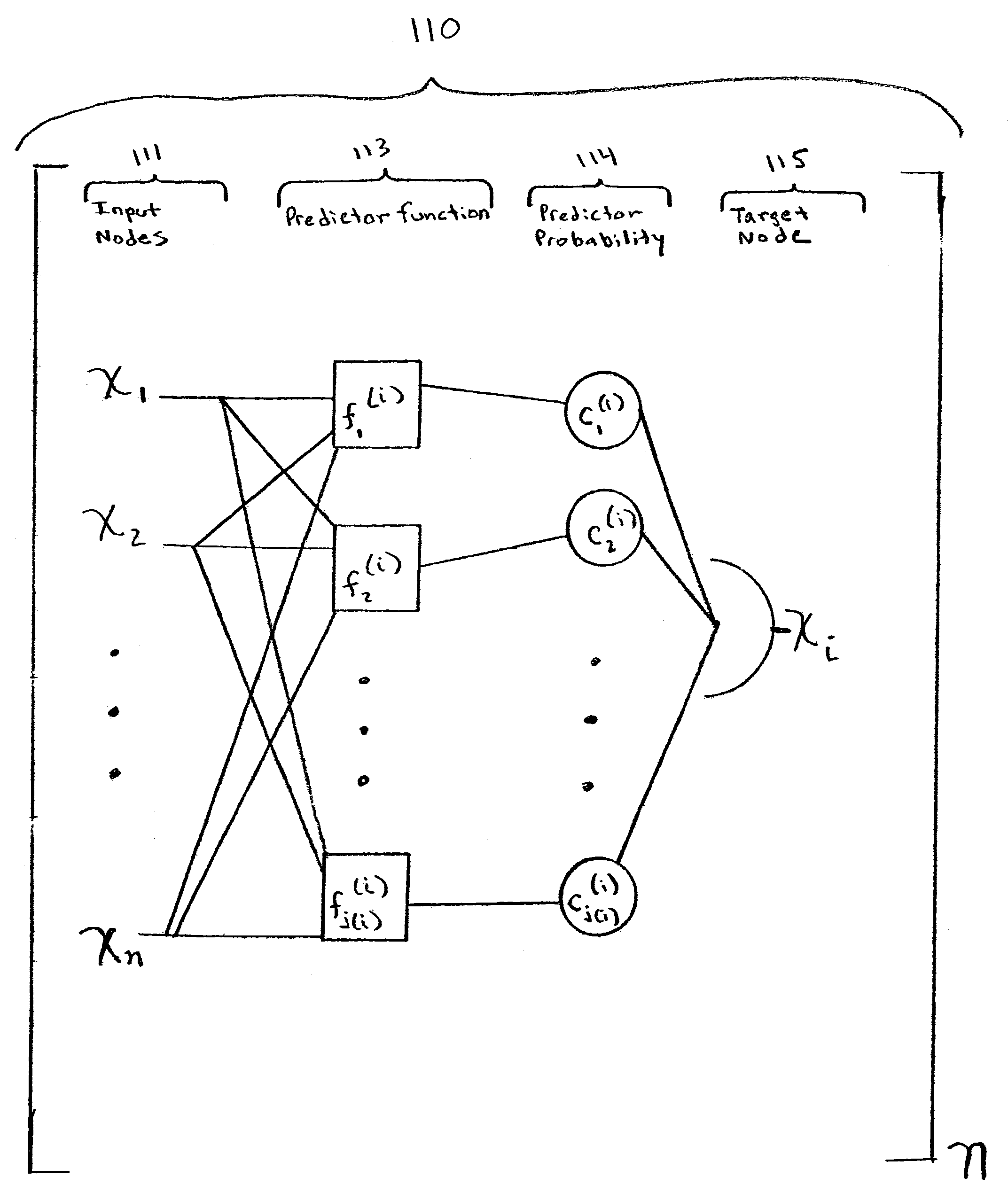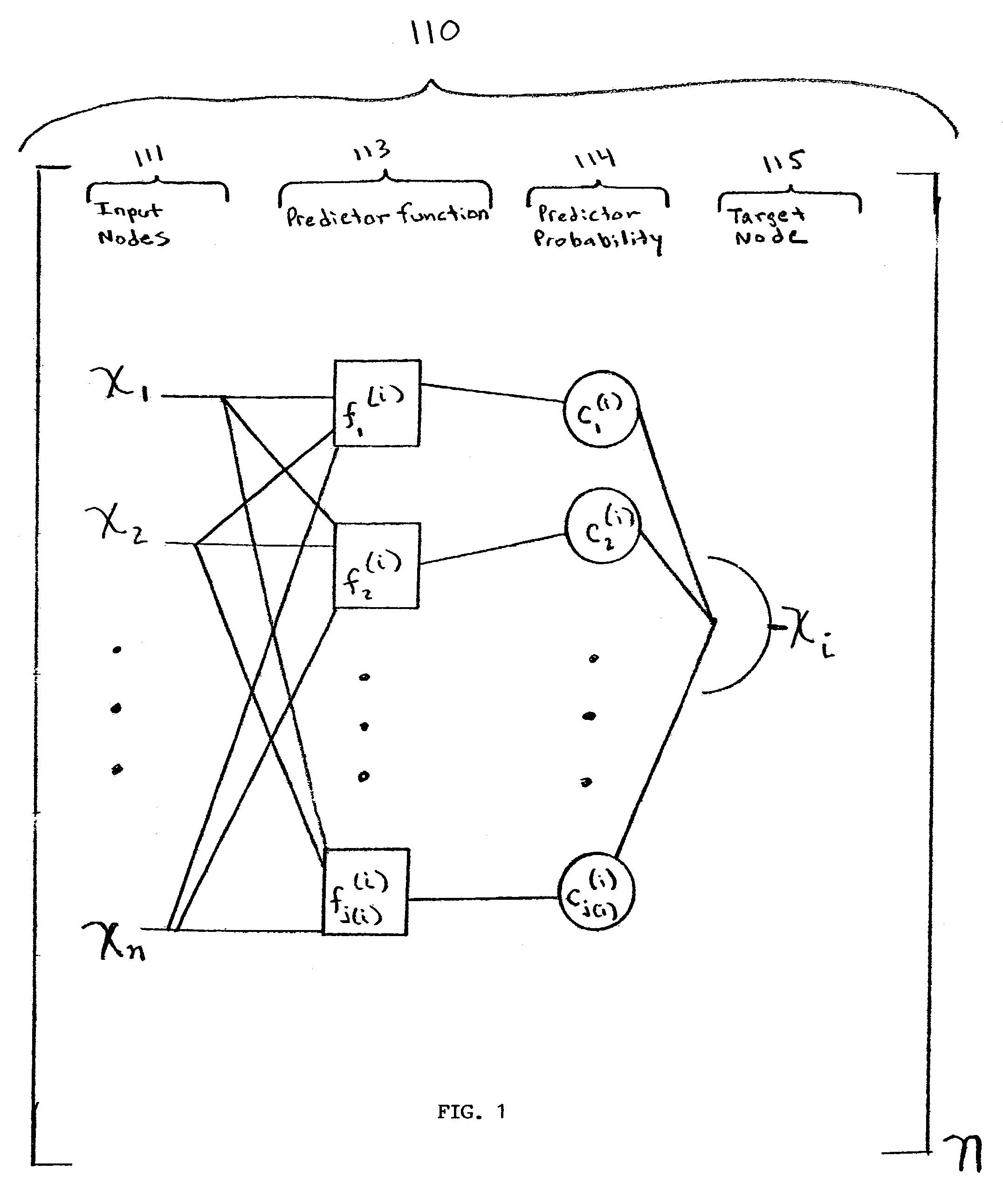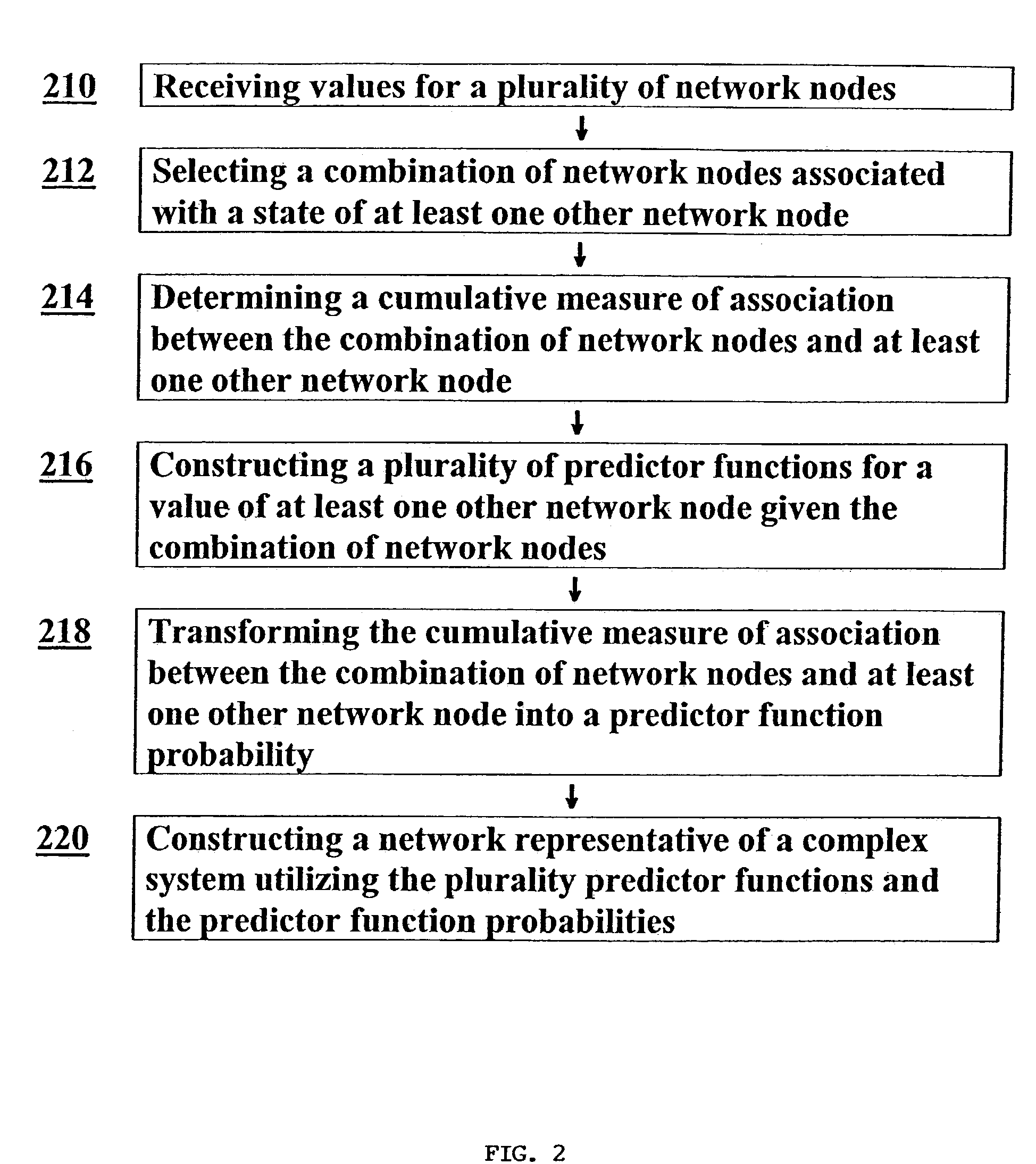Probabilistic boolean networks
- Summary
- Abstract
- Description
- Claims
- Application Information
AI Technical Summary
Benefits of technology
Problems solved by technology
Method used
Image
Examples
example 1
Exemplary PBN of a Gene Network
[0175]Suppose we are given a PBN consisting of three genes V=(x1, x2, x3) and the function sets F=(F1, F2, F3), where F1={ƒ1(1), ƒ2(1)}, F2={ƒ1(2)}, and F3={ƒ1(3), ƒ2(3)}. Let the functions be given by the following truth tables.
[0176]
x1x2x3f1(1)f2(l)f1(2)f1(3)f2(3)0000000000111100010111000111001010000100101111101101101011111111cj(i)0.60.410.50.5
Since there are 2 functions for node x1, 1 function for node x2, and 2 functions for node x3, there are N=4 possible networks and matrix K is equal to
[0177]K=[111112211212]
For example, the second row of K containing (1, 1, 2) means that the predictors (ƒ1(1), ƒ1(2), ƒ3(3)) will be used. Finally, by using equation (9), the state transition matrix A is given by
[0178]A=[100000000000001000000010P4P300P2P10000100000000000P2+P4P1+P30000P2+P4P1+P30000000001]
Let us consider one of the entries in matrix A to clarify its construction. Suppose we wish to compute the transition probability Pr{(1, 1, 0)→(1, 0, 0)}, which co...
example 2
Steady State Distributions of Independent PBN
[0179]To illustrate lack of a steady-state distribution, let us consider a three-variable independent PBN. Since we are not concerned with the probabilities, but only the possible Boolean functions, we can use a simplified notation to list the possible functions. We use a table consisting of eight rows corresponding to the eight states, and three columns corresponding to the possible values the Boolean functions can have for the three variables given the state determining the row. The entry * in the table means that the value of the predictor for that gene given the values of the genes in that row can be either 0 or 1. Consider the following function table:
[0180]
x1x2x3f(1)f(2)f(3)000*1100101*01000*01100*10011*10111*11010*111*00
So, for example, there are four possible predictors ƒ1(1), ƒ2(1), ƒ3(1), ƒ4(1) for the first gene. Similarly, there are 256 possible vector functions (network realizations) of the form f=(ƒ(1), ƒ(2), ƒ(3)). The corr...
example 3
Steady State Distributions of Dependent PBN
[0181]The previous example considered an independent PBN. The steady-state requirement can be even more constraining for dependent PBNs. Consider the following very simple PBN with only two network functions (realizations), f=(x1, x2)=(ƒ1(1), ƒ1(2))=( x1, x2) and f=(x1, x2)=(ƒ2(1), ƒ2(2))=(x1, x2). Since the PBN is dependent, the selection of the predictor for the first gene may not be viewed independently of the selection of the predictor for the second gene. The above two possible network realizations imply, for instance, that if ƒ1(1)= x1 is selected for the first gene, then ƒ2(2)= x2, cannot be simultaneously selected for the second gene. That is, the probability that the network f takes on any realization other than the two given above, say (ƒ1(1), ƒ2(2)), is zero.
[0182]The corresponding Markov diagram is given in FIG. 13. This PBN is not aperiodic and does not possess a steady-state distribution. Note that the addition of the network ...
PUM
 Login to View More
Login to View More Abstract
Description
Claims
Application Information
 Login to View More
Login to View More - R&D
- Intellectual Property
- Life Sciences
- Materials
- Tech Scout
- Unparalleled Data Quality
- Higher Quality Content
- 60% Fewer Hallucinations
Browse by: Latest US Patents, China's latest patents, Technical Efficacy Thesaurus, Application Domain, Technology Topic, Popular Technical Reports.
© 2025 PatSnap. All rights reserved.Legal|Privacy policy|Modern Slavery Act Transparency Statement|Sitemap|About US| Contact US: help@patsnap.com



